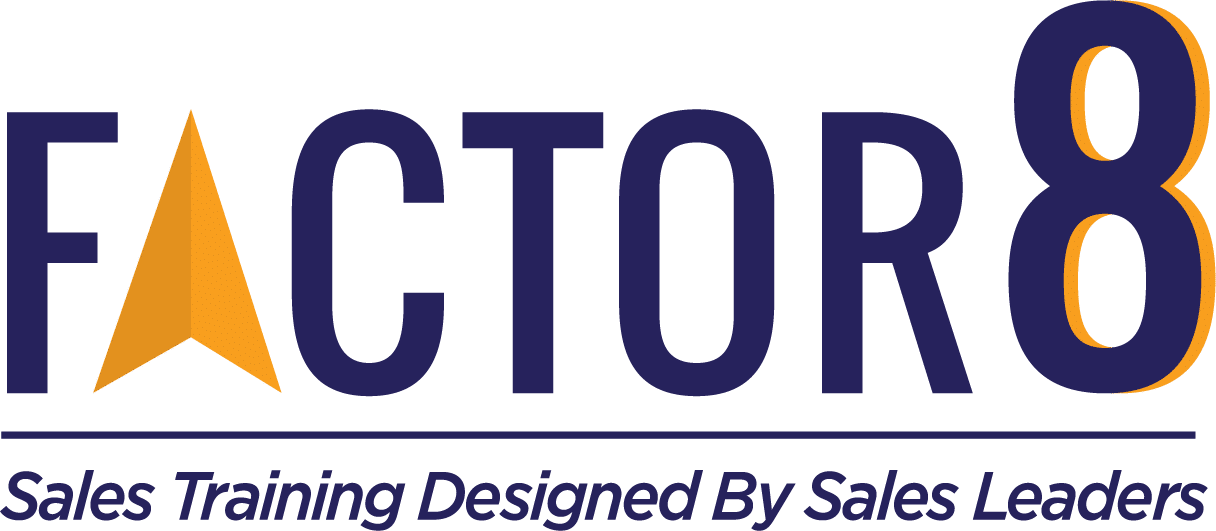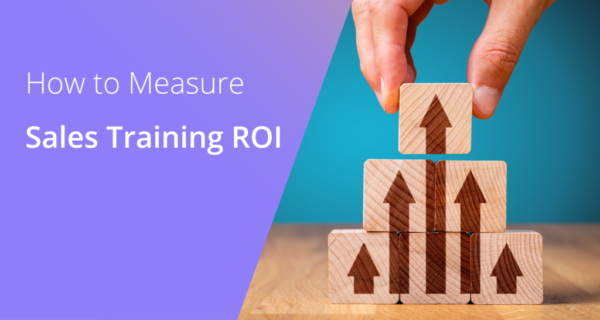How to Measure Sales Training ROI
Training geeks will tell you there are four traditional ways to measure sales training ROI and the impact it has on an organization. It’s called “The Kirkpatrick Model.” In my experience, this model only includes two measurements that sales leaders actually care about. I’d like to add a few alternate levels to consider.
Level 1 is Learner Feedback. The smile sheet has more to do with liking the trainer or getting fed than the impact, and the quiz results are more about short-term memory than anyone’s understanding of how to actually apply skills.
Level 2 is Observation. What happens on the job? It’s observed behavior change, and it’s subjective. “Manager, did Bob use his new skills?” Manager: “Um, I haven’t been listening to Bob all day long, boss. I have 14 people and 200 emails to read…” You get the struggle.
Level 3 is Information Retention. New skills should be fresh in their minds and easy to execute the day after training, but what about 2 months later? 6 months? 1 year? Over time, people are known to fall back into bad habits. Truly valuable training provides easy-to-use (and memorable) skills that stick with the learner over time.
Level 4 is ROI. Calculate sales training ROI by taking the results that went up and dividing by the cost of the sales training. Naturally, there are flaws here, like, “When do we stop measuring?” “What about soft costs of missed revenue?” “What if results fall off?” and “Training wasn’t all we changed that quarter!”
When I advise sales training leaders, I help them solve it all with two little words:
“Contributed to”
Last quarter, new vendor training contributed to a 25% increase in meeting close rates and a 34% increase in show rates. Extrapolated over the period of a year and using our standard meeting to deal close rates, that means an additional 245 meetings and 66 closed deals or $3.1 million in revenue. That’s a 31x return on investment of the $100K training investment. (That’s also expressed 3,100% folks and it’s BIG. It’s also a real case study, BTW).
So, sales training ROI is a big deal. When calculating, the bottom line is nearly always revenue or profit, but there are little wins along the way. Look for bumps in any of the following (and celebrate!):
- Talk time
- Conversations over 2:00 minutes
- Close percentage
- Show rate
- Pipeline velocity
- Average deal size
Combine these as I did over a time period of a year and the numbers get big fast. Even a modest increase in a close percentage or deal size will bring double-digit ROI.
Now for the new stuff. In today’s climate, there are 5 more sales training ROI measurements I advise you to start tracking:
- Applicant increase
- Tenure
- Promotion rate
- Employee satisfaction (a KPI to tenure)
- Ramp time
Yes, nearly all of these are about helping show the link between the career development you offer the new generation of sellers and how many of them come to work for you and stay.
If you’re offering ongoing development, a training budget, a certification, or a partnership with a premier vendor, ADVERTISE THAT (you’ll attract the new generation of sellers!). Then start tracking the average number of applicants over the previous months, but don’t compare pre-COVID (that’s apples vs. bacteria).
Great development keeps people in companies longer. So count what percentage of promotions are now happening internally and whether your investments are moving the needle of employee satisfaction.
There’s a direct correlation between employee engagement (and happiness) and their performance. If they’ve been with your company for 6 years and are consistently meeting or exceeding quota, chances are they’re happy in their role and less likely to leave. Have they missed quota a few times now, or are they not as engaged with their customers as they once were? Then it might be time for a 1:1 to see what is going on behind the scenes.
Finally, my holy grail: ramp time. How long does it take a new hire to get to quota? This critical number not only impacts revenue right where it counts but also determines whether a rep stays or not. Here’s an insider tip:
People who feel successful at work will keep coming back to work.
No, not Earth-shattering, but it might be if you reverse-engineer it. 20 years ago I revamped a new hire sales training program for a computer manufacturer. It was taking reps 9 months to hit their goal. Ouch. (Best practice is 3-6 months and it’s getting longer – we’re now approaching 9 months again) Yes, we took out a bunch of filler courses and implemented my “Just in Time” training approach, but we also did something a little sneaky. We lowered the bar. The VP of Sales and I saw the mass exit happening at six months and we worked together to get reps PAID if they were on track by this point in time. The result? We cut the turnover in half.
Help people win, and they’ll stay and keep winning.
Long story long, employee development has an impact on more than just revenue. There’s a reason training investments are up over 30% as an industry over last year. And if you don’t already have your enablement team running regular reports on these new stats, I suggest you get started or you’ll be late to the party. It may feel like we’re in a war for talent, but I assure you this is only the battle. Use your training investments strategically to attract, keep, and promote your people because this precious resource will become only more scarce.
Want more information on how to measure sales training ROI?
Contact us today to request information on our customizable virtual sales training programs
available for reps (and managers).

